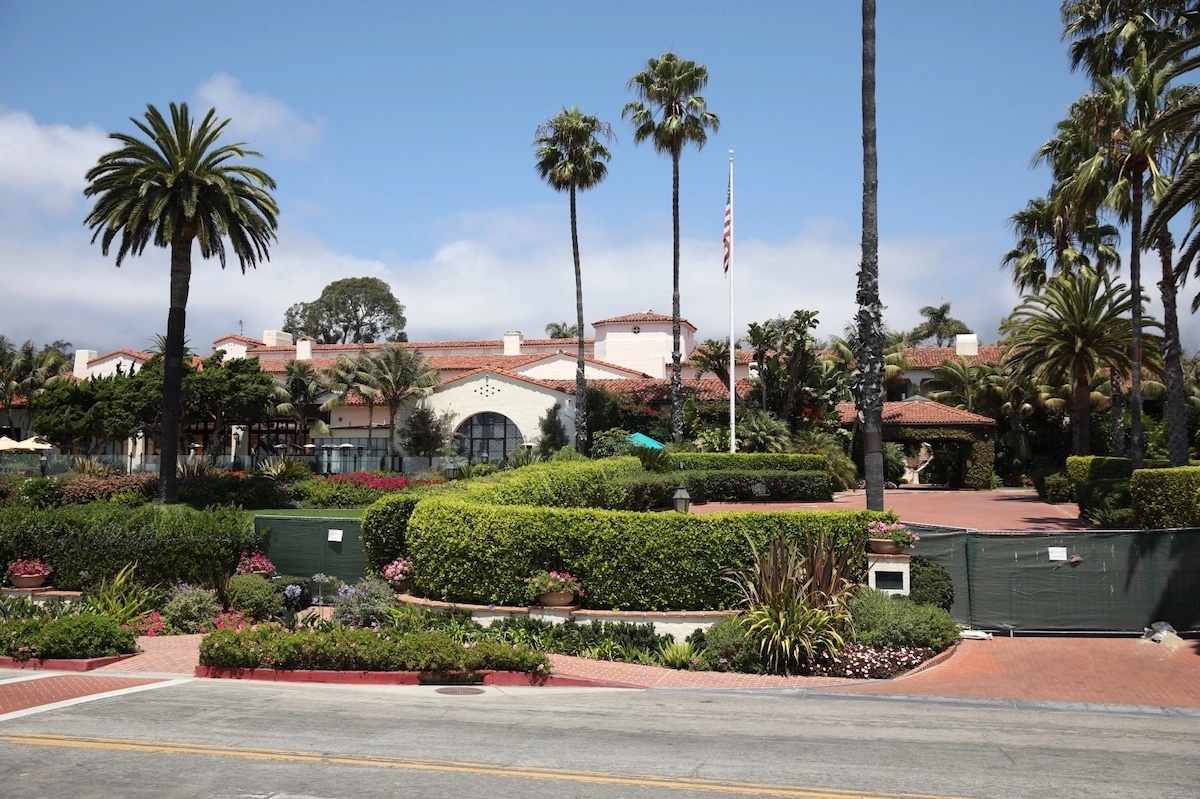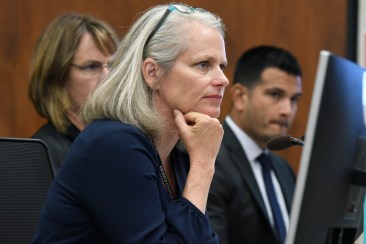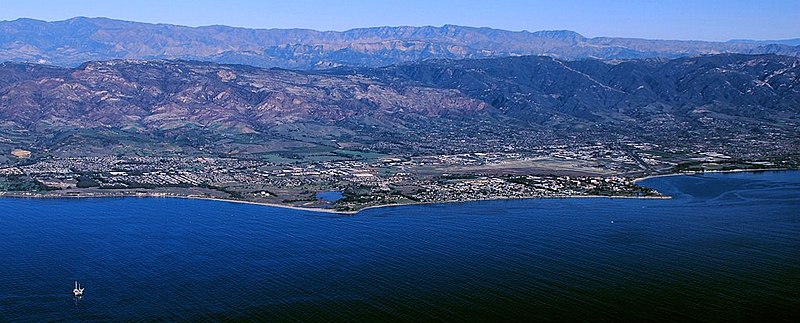Santa Barbara County
Proposes 19 New Sites
for Housing
County-Owned Properties, UCSB Housing
Included in Housing Element Update
While Goleta Wonders About Water Supply
By Ryan P. Cruz and Jean Yamamura | March 28, 2023

The County of Santa Barbara will release the latest updates to its Housing Element on Friday, and last week Planning and Development Director Lisa Plowman shared a preview with media outlets, including plans for an additional 19 sites and a potential 2,151 units added to the county’s list since the last map was released just over two months ago.
New Sites, More Options
Among those new sites are seven county-owned properties, including three parcels at Camino del Remedio campus, the probation office on Carrillo Street, and a parking lot on Santa Barbara Street. Out of the 2,000-plus units added to the plans countywide, 518 would be for lower-income households, while 666 moderate would be for moderate and 967 above-moderate.

On the South Coast, an area struggling to build affordable housing, the county proposes 1,561 units. In the Goleta area, this includes a vacant parcel next to Friendship Manor in Isla Vista, a Montessori-owned ag parcel next to San Marcos Growers, and three UC Santa Barbara faculty housing projects that could add a total of 730 new units, though Plowman said many of those units would only help with meeting market-rate quotas.
Plowman described the next steps to meeting these quotas, which include a zoning change to add residential to all commercial parcels. She also noted that county planners had included a buffer of twice the number of units the county needs to allow the county more options than originally included.
“This broadens the range for the board to choose from,” she said, making it clear it was the Board of Supervisors that will ultimately make the unpopular decisions on converting ag lands to housing.
The county received more than 430 public comments about the last draft, Plowman said, which represented opinions from “all over the map,” with letters from across the spectrum, both supporting and opposing the county’s proposed rezoning of agricultural lands like the Glen Annie Golf Club.

Public comment also showed that many were concerned that Montecito properties were conspicuously left out of the original plans. This time around, the county has added two hotel-owned parcels in Montecito: a parking lot and tennis area at The Biltmore that could be converted into 40 units set aside for employee housing, about 20 units for employees at the Miramar, with half affordables at both locations.
Other changes will create incentives for higher-density projects by allowing smaller units, in an effort to alleviate the South County’s crisis-level vacancy rates, which Plowman said are “below one percent” with rent prices “higher than ever.”
Is Water an Issue?
For many Goletans, water is the first thing that came to mind on hearing that the county’s housing plans could rezone nearly 300 acres of agricultural land on the city’s border for a potential 4,000 homes. While the California Department of Water Resources announced State Water allocations went up to 75 percent on Friday, those allocations were between zero and 7 percent at the height of the drought, and Goleta has been under a water moratorium since 2014. Surprisingly, the Goleta Water District (GWD) wrote recently that water supply is not an issue for the Goleta Valley, in part due to the plentiful rains this year, but also because of an untapped county water allocation.
In a letter to Housing and Community Development (HCD), the state agency that oversees Housing Element documents, GWD water supply manager Ryan Drake observed that the county has a right to 12,214 acre-feet of water it hasn’t touched since 1981. The county could re-acquire this entitlement, Drake wrote, by paying the accumulated costs over the years for the infrastructure built to move the water through the Santa Ynez Mountains from Lake Cachuma. Drake said the cost was last estimated to be about $40 million.
The 12,000 acre-feet is an annual allocation, and the costs the county would owe reflects the infrastructure maintained and built over the past 47 years, said Ray Stokes of the Central Coast Water Authority (CCWA), which operates the pipeline from Cachuma to the South Coast. Stokes said it’s something they’ve pursued over the years, though not recently because of a lawsuit between his agency and the county.
Whether the water would be available next year, of course, depends on whether it continues to rain or not. Stokes noted that the major reservoirs for this area, Oroville and San Luis, are both full and could last through maybe two years of drought.
Drake noted that water rights on parcels are based on historic use, pre-existing agreements, and past legal judgments in some cases. “The District’s water supply and policies are not an impediment to development within the District, and the District currently projects being able to issue new water allocations by the end of this year,” Drake stated.
Agricultural Lands to Housing
Goleta received its second Housing Element review letter from the state housing department on March 20, which is five pages compared to the first review of 12 pages. The state housing agency had warned at the outset it can take three to four revisions to pass scrutiny and become certified.
In its review, state housing also considered a letter from Brownstein Hyatt Farber Schreck, a national law firm that absorbed the Santa Barbara firm Hatch & Parent in 2007, a big player in the local State Water universe. Brownstein attorney Beth Collins gives 20 pages of examples refuting Goleta’s asserted potential for development on underutilized and non-vacant parcels, or any streamlined processing of permits. She cited the lengthy nine-year approval process for Brownstein client Heritage Ridge, which received approval earlier this month.

Brownstein also represents the Shelby project, across Glen Annie Road from the golf course. Zoned agricultural like the golf club, Shelby proposed 60 homes on its 14 acres in 2005 but fell short due to a lack of water. According to Goleta Councilmember Stuart Kasdin, Collins stated that if water became available, Shelby would consider increased densities and also development under the builder’s remedy.
Goleta’s planning director, Peter Imhof, seemed sanguine about the state’s demands. “The State is asking for more information,” he replied in an email, while planning staff was determining “how best to meet the requests.” About half of Goleta’s Housing Element is on non-vacant sites, as Collins had pointed out, and the state asks for more information that existing uses won’t preclude or impede housing development.
For similar reasons, the county removed the Magnolia and Turnpike shopping centers from this round of the Housing Element, judging that the state was unlikely to accept it on face value, even with owner buy-in, because in some instances the land leases went beyond the eight-year Housing Element time frame.
What’s Next?
The county Housing Element updates and map will be released March 31, and the Board of Supervisors will discuss the item on April 4. In the meantime, the planning department will be “working furiously” on the programmatic environmental impact report and to prepare the number of programs which will also need the supes’ approval with the final Housing Element draft.
In the summer, the county will hold two workshops, for North and South County, to receive public comment on the environmental report and document changes. After another round of state review, the county could have a final draft ready for adoption in winter 2023, and all proposed rezones must be completed by February 2024.




You must be logged in to post a comment.